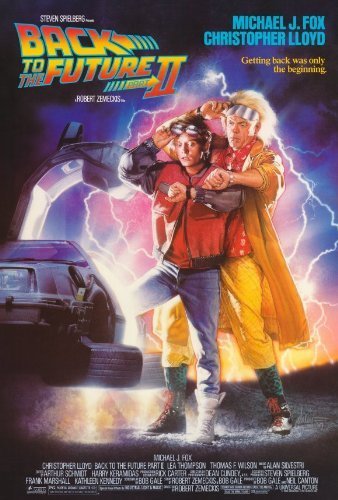


It picks up right at the end of Back to the Future Part III from Doc’s point of view. And we were talking about it with our editor, with IDW, and the idea of doing a story about Doc, Clara, Jules and Verne - his whole family - it seemed like a good starting point for a good story. Doc was definitely a part of them, but he wasn’t the central character. We ended up doing 25 issues of the ongoing series, once we’d gotten into the big story, and for the most part, they focused on Marty. I’d written what I thought everyone wanted to see, but it wasn’t what anyone wanted to see. I’d already figured out at least part of what I’d gotten wrong by that point. It was a couple of pages, I sent it off, and then the weekend came and I thought, “Wow, that was a terrible idea.” Bob called about a week later, and said, “I want to talk to you about this idea,” and I said, “It’s not very good, is it?” He was like, “No, it wasn’t.” We got along pretty well from that point. 5, when we showed the first experiment with the Time Train, we definitely had tracks!īarber: Around the time it was decided to do a bigger story, I pitched this terrible idea. John brought a whole lot to the party - sometimes, he would come up with an idea and I’d just make sure the proverbial train stayed on the tracks.īarber: Except for, they don’t have tracks. Let’s explore that.” By the time the third issue came out, they said, “It’s selling pretty well, we’re going to expand it to five issues,” and then a couple of weeks later, they said, “We’re going to make it into an ongoing series.” Once they said that, I got with John Barber, who’d been the head writer on the first four, and we started kicking ideas around asking, how do we explore new adventures? That was when IDW said, “We don’t want to do little shorts, we’re going to have longer arcs.” One thing led to another, and we came up with some interesting ideas. It was a way for us to stay true to the Back to the Future mythology - I certainly wasn’t going to allow the mythology to get screwed up in any way - and the folks at IDW said, “That’s a good idea. For example, how did Marty and Doc Brown meet? Why did Doc Brown’s house burn down? These were things, to me, that were good ideas to do stories about, things that fans wanted to know about.

Back to the future part iii relased series#
So, I said, “if we’re going to do this” - and at the start, it was just going to be a four-issue series - we’ve had people write in for years with unanswered questions they had from watching the movies. We looked into this when we did the Back to the Future video game with Telltale back in 2010, and we determined that fans want to see Marty McFly and Doc Brown and the characters they know and love from the movies.
Back to the future part iii relased license#
Gale: When IDW said to Universal, “We’re looking for the license to do Back to the Future,” the original pitch to me was, “We will do new adventures with Marty’s kids and the next generation of Back to the Future,” and I said no, no. Was the intention always to get to this point? IDW has been publishing Back to the Future comics for a couple of years now, but this is the first time you’ve gotten around to addressing the dangling plot thread of Doc’s dialogue at the end of Part III. Heat Vision talked to the writers of the series about going back (and forwards) in time to continue the beloved series in comic book form. The scientist responds, “Nope, already been there,” the line that would end the film series. Fox) asks if Doc is going back to the future. The 1990 film ends with Doc (Christopher Lloyd) and his kids returning in a time-traveling train, only to fly off again.


 0 kommentar(er)
0 kommentar(er)
